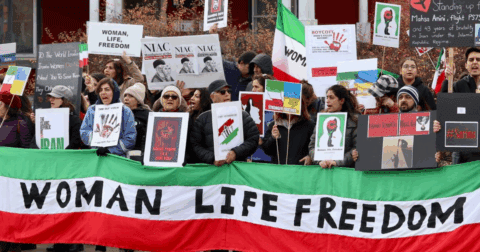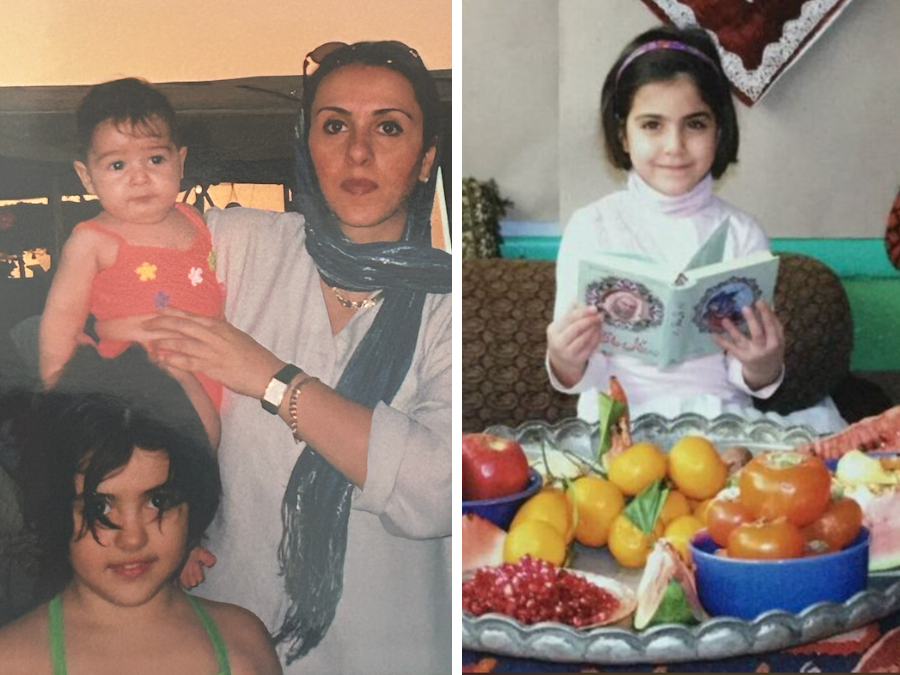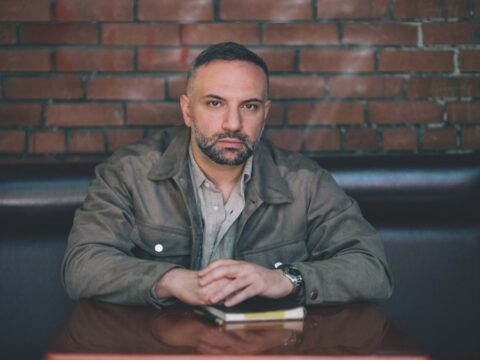On June 13, Israel launched surprise airstrikes on Iran’s nuclear sites, research labs, military bases and more. The attacks happened two days before the United States and Iran were scheduled to meet in Oman for the sixth round of nuclear agreement negotiations. Twelve days later, Iran and Israel had agreed to a ceasefire, but the U.S.-Israeli attacks had killed more than 1,000 people in Iran, including close to 700 civilians. Retaliatory strikes from Iran killed 28 people in Israel.
Thousands of kilometres away, Broadview summer interns Paniz Vedavarz and Ghazal Azizi were constantly refreshing their phones to get the latest updates. Both have family in Iran, but each has a different relationship to the country. In a conversation, they reflected on being part of the Iranian diaspora and how the country is represented in international media amid this heightened tension.
You may unsubscribe from any of our newsletters at any time.
On watching the conflict from afar:
Paniz Vedavarz: I was born in Toronto and have been to Iran only twice: once as a baby and again when I was four years old. So I’ve been raised Iranian without ever really knowing the country firsthand. And yet, I carry a deep love for a place I’ve never truly known in a physical sense. There’s a disconnect between what I hear from my family and see in old photos, and the version of Iran shown in the news and media. It creates a real sense of fragmentation. That feeling is heightened now with the recent conflict, especially as the diaspora itself feels divided. For those of us with family still in Iran, it’s hard to focus on the politics of the regime when people’s lives are at risk.
Ghazal Azizi: I moved to Canada in 2016 and still have many friends and family back in Tehran, Kashan and elsewhere in the country. I had a constant feeling of guilt for watching the war unfold from a place of safety. My eyes were glued to WhatsApp, awaiting updates from my cousins and grandparents. But the most frustrating part of living in the diaspora is the burden of responsibility to awaken non-Iranians, and often other Iranians too, to the years of misinformation about our home country. As if “home” isn’t complex enough after immigration, the sense of homelessness is exacerbated when you can’t find any institution or organization to holistically represent you, when you must always preface any statement with “I condemn” lest you are marked as a regime apologist by some or a westernized traitor by others.
On the role of misinformation and propaganda:
PV: As young journalists, we’re trained to value objectivity, but frequently when it comes to coverage of Iran, I feel that nuance is often stripped away. Iran tends to be flattened to only its regime, leaving out critical voices, especially from those who oppose both the government and foreign intervention. Diaspora perspectives are often limited to voices like Reza Pahlavi, the exiled son of Iran’s last monarch, even though his views don’t represent a viable path forward for many Iranians today. While he says he doesn’t want to reinstate the monarchy, he still uses royalist symbolism, which alienates many Iranians, especially younger generations and activists inside Iran who see his approach as outdated or out of touch. I’d like to see more reporting that reflects the complexities of Iranian identity and opinions. Let’s make space for voices that oppose the regime but still see war as not an answer. People can be critical of the government without wanting to see innocent civilians killed by hostile foreign intervention, like what we’ve seen from Israel and the United States.
GA: For me, the most disappointing coverage over the 12 days of the Israel-Iran war was the day Israel bombed the headquarters of Islamic Republic of Iran Broadcasting (IRIB), Iran’s state TV network. To hear crickets from Western politicians and press as fellow reporters are targeted was disheartening to say the least, and watching some Iranians celebrate the attack, given the IRIB’s pro-regime coverage, only rubbed salt on the wound, though I try to empathize. The glass building was an icon of contemporary Iranian architecture, predating the Islamic regime and should have been protected as media infrastructure. Yet since the war on Gaza began, I’m not sure if “international law” — let alone journalists — demands the same respect it once did.
More on Broadview:
On religious trauma, Islamophobia and the weaponization of the Woman, Life, Freedom movement:
PV: One thing I find troubling is how Iranian women’s experiences are exploited to justify Islamophobia. Images of pre-revolution Iran featuring women in bikinis or mini-skirts are often used to push a narrative that ignores the complexity of choice and context. Pre-revolution Iran was by no means a feminist utopia. The hijab is frequently framed solely as a symbol of oppression, when in reality, it’s the mandatory veiling law that many Iranian women are resisting, not the hijab itself.
The Woman, Life, Freedom movement — sparked by the murder of Mahsa Amini by Iran’s so-called morality police in 2022 — became a powerful moment of resistance for women’s rights in Iran and created real ripples within the country. The regime’s treatment of its people, especially women, was exposed globally in a way I had never seen before. The courage of those who protested, particularly inside Iran, cannot be understated, and many of these same activists have publicly condemned the current war. That’s why it’s deeply frustrating to see Israeli Prime Minister Benjamin Netanyahu and others use this feminist movement to justify attacks on Iran’s civilian areas, including Evin Prison, where many political prisoners, including women’s rights activists, are held. Liberation should come from within, not through violent foreign intervention.

GA: I’m similarly skeptical of anyone who evokes Woman, Life, Freedom only to push an agenda of intervention and war on the very people they claim to save. Are the women in Afghanistan any freer today than before the American invasion? Are queer people in Gaza any safer today than they were under Hamas before Israel’s campaign began? Like in any other totalitarian regime, the people will inevitably rise, fight for and define their freedom. Iranians have proven time and again that they are more than capable of resisting on their own terms, and no one abroad should prescribe or force a solution on them, let alone hijack their honourable movement for their own gains.
Again, like the execution of political prisoners after the Iran-Iraq war in 1988, the Iranian regime has tightened its grip on internal opposition while it battles for its life on the international stage. The crackdown on dissent, disguised in the grammar of finding spies following the U.S.-Israeli attacks, has only reversed the progress made by brave protesters in the 2022 uprisings. U.S. President Donald Trump and Netanyahu have no intention to “Make Iran Great Again” as they claim, and anyone who believes them is a fool.
***
Paniz Vedavarz and Ghazal Azizi are Broadview summer interns.














